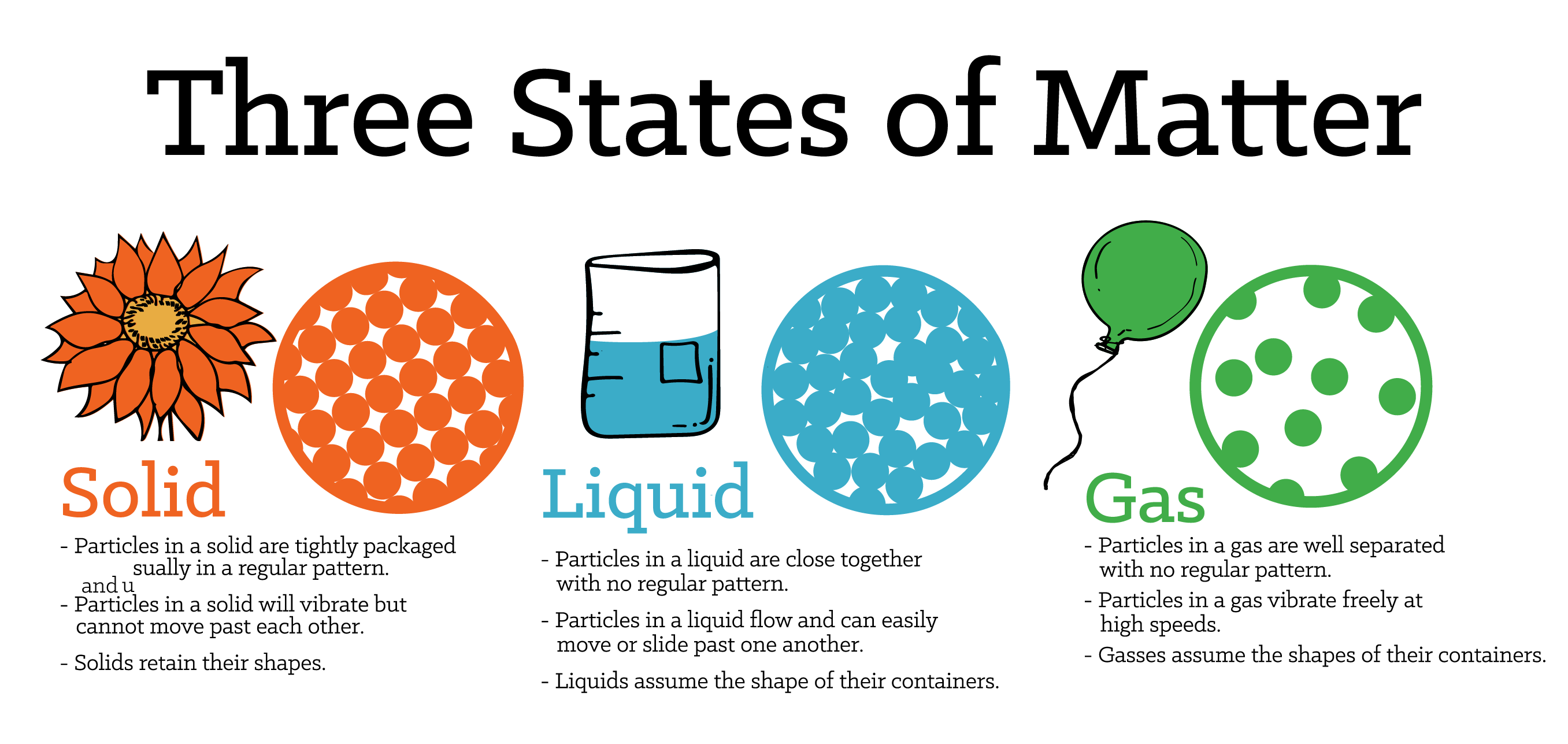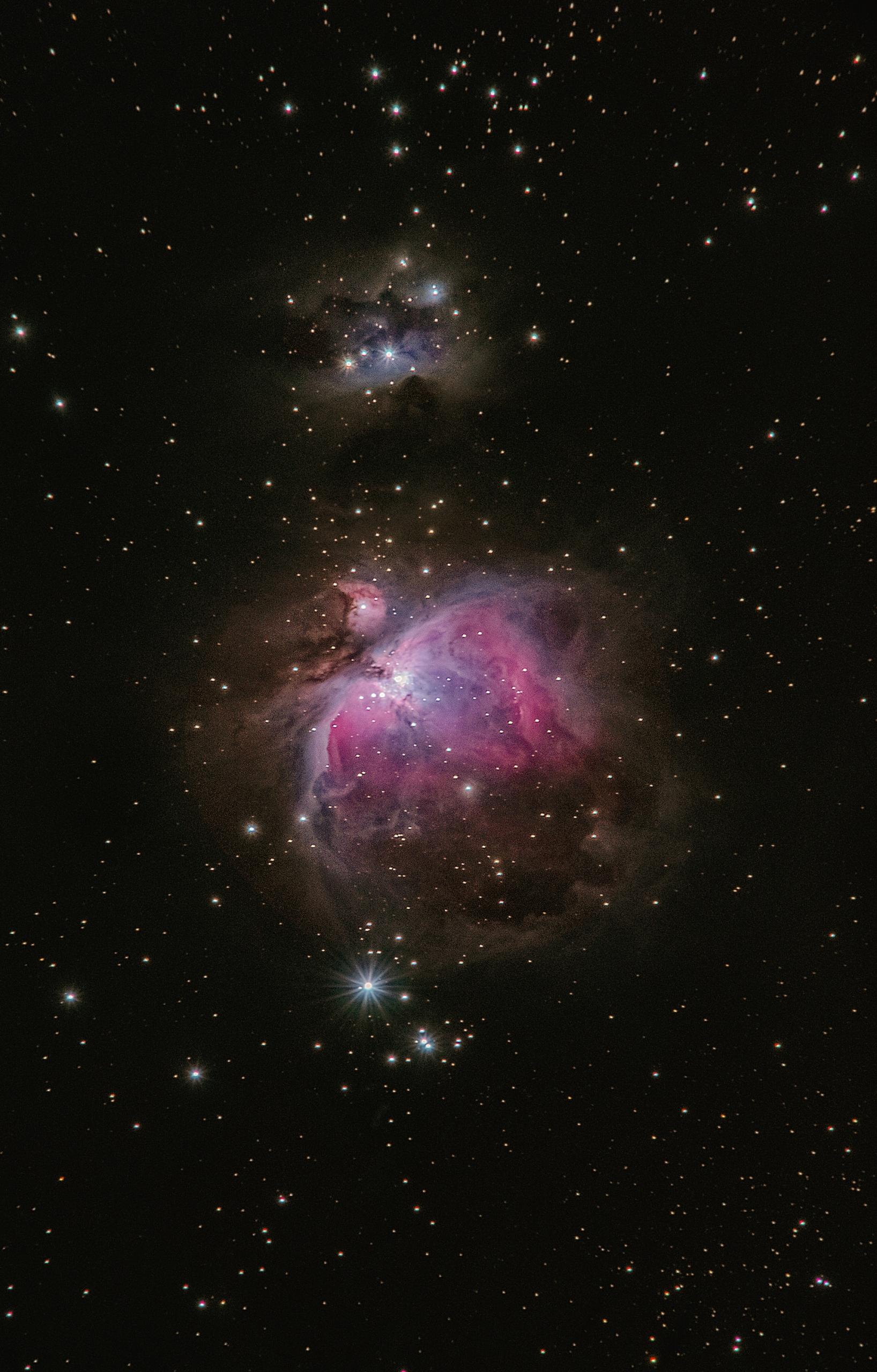Everything in the entire universe is Matter, so how does one explain the states of matter and how many states of matter are there?
Well, in this post we're going to give it one hell of a shot, so sit tight and let's explore what Matter is, the States of Matter and
some fun facts about states of matter!
So what exactly is Matter?
Matter is a substance made up of various types of particles that occupy physical space and have inertia. According to the principles of modern physics, the various types of particles each have a specific mass and size. In basic English this means,
Matter is anything that occupies space and has mass (weight), everything you can see and touch is made up of matter.
John Dalton is the scientist who gave the atomic theory of matter. He was the first scientist to discover that all matter is made up of atoms and formulated the atomic theory.


3 Most Common States of Matter
Most people are familiar with three of the five states of Matter, they are Solids, Liquids and Gases.
It is important to understand the particle nature of matter. The particles that makeup matter are not ‘small bits of solid’ or ‘small drops of liquid’ but atoms and molecules. The physical characteristics of those atoms and molecules decide their state.
Now let's look at these 3 states of matter a little more closely.
Solid State
Something is usually described as a solid if it can hold its own shape and is hard to compress (squeeze/mould). The molecules in a solid are closely packed together, they have a high density.
Right now, you are probably sitting on a chair, using a mouse, keyboard or a laptop that is resting on a desk, all those things are solids.
Liquid State
In liquids, the molecules have the ability to move around and slide past each other. A liquid will take on the shape of the container it is being held in. While a liquid is easier to compress than a solid, it is still quite difficult – imagine trying to compress water in a confined container!
Water is an example of a liquid, and so is milk, juice and the petrol you put in the car.
Gas State
In gases, the atoms are much more spread out than in solids or liquids, and the atoms collide randomly with one another. A gas will fill any container, but if the container is not sealed, the gas will escape. Gas can be compressed much more easily than liquid or solid.
Right now, you are breathing in the air, a mixture of gases containing many elements such as oxygen, nitrogen and carbon.

The States of Matter You Need to Know
There are two more Main States of Matter which you may be less familiar with, but they are just as important as the three which we have already explored.
Plasma State
The scientific word, 'Plasma' can mean two very different things! So, it's important that we differentiate before we go any further.
In medicine (Biology), the word plasma refers to the liquid part of blood. This yellowish fluid makes up about 55% of our blood. Blood plasma has a lot of important jobs. It delivers nutrients to cells and carries away cellular waste. Plasma also shuttles proteins for blood clotting to injuries, helping the body heal. And it carries antibodies that help fight off infection.
However, when it comes to Chemistry and Physics, the type of Matter referred to as Plasma is very different. Plasma is a gas that has an electric charge.
Plasmas form when extra energy, such as heat, is added to a gas. This extra energy can knock electrons off the atoms or molecules in the gas. What’s left is a mix of negatively charged electrons and positive ions. That mix is plasma.
Two types of corrosive compounds are acids and bases. Any material with a pH value between 0 and 7 is known to be acidic while a pH value between 7 and 14 is a base.
Because plasmas are made of charged particles, they can do things that ordinary gases cannot. For instance, plasma can conduct electricity. Plasmas also can respond to magnetic fields. Plasma might sound exotic, but it’s the most common state of matter in the universe. Stars and lightning bolts contain plasma.
On Earth, plasmas are commonly found in some kinds of fluorescent lights and neon signs. Another form of plasma on Earth happens during storms as lightning. Overall, plasmas are the most common state of matter, they make up 99% of the visible universe.

Bose-Einstein condensate (BEC)
Of the five states matter can be in, the Bose-Einstein condensate is perhaps the most mysterious.
A Bose-Einstein condensate is a group of atoms cooled to within a hair of absolute zero (around -273°C).
When they reach that temperature the atoms are hardly moving relative to each other; they have almost no free energy to do so. At that point, the atoms begin to clump together and enter the same energy states. They become identical, from a physical point of view, and the whole group starts behaving as though it were a single atom.
To make a Bose-Einstein condensate, you start with a cloud of diffuse gas. Many experiments start with atoms of rubidium. Then you cool it with lasers, using the beams to take energy away from the atoms. After that, to cool them further, scientists use evaporative cooling.
The classic example of Bose-Einstein condensation for many years was liquid helium. At the transition of liquid helium from an ordinary liquid to what is called a superfluid, the viscosity vanishes and helium starts to behave like a quantum fluid.
















